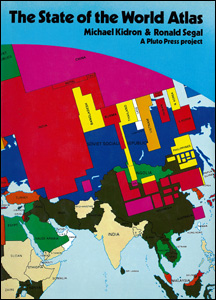H.J. de Blij, Peter O. Muller, and Jan Nijman, 2013
I didn't know what I wanted to major in when I got to Berkeley, so my first few semesters I took a wide range of courses. One of them was Political Science 2, a class on comparative government. I remember that one week the professor visited my discussion section to take questions in a friendlier setting than a gigantic lecture hall, and one student asked about majoring in political science. The professor replied that political science departments shouldn't award undergraduate degrees. If you want to be a political scientist, he said, your undergraduate major should be history. Then you'll actually have a personal store of data to draw upon when you turn to more theoretical work as you pursue your graduate degree in poli sci.
I'm often reminded of his advice when I look at course listings. Several years ago I audited History 4A, a survey of ancient Egypt, Greece, and Rome, but when I looked at History 4B, the follow-up course on medieval Europe, the online blurb sneered at the notion of presenting "a superficial chronological survey of a 1000-year period". History 4B, the blurb avowed, would instead look at a couple of shorter periods in more depth, drawing out themes. Which might well be cool, I thought — after I'd had the superficial survey. The medieval history course I ended up watching was a Yale course that I found on Youtube, which started with the reign of Diocletian and pretty much did just go century by century from there.
A while back I was helping a college student pick out courses. She had told me that she felt embarrassed when well-known countries came up in conversation and she had no idea where to find them on a map, so a geography survey seemed like a good way to simultaneously remedy that and knock out a breadth requirement. But geography survey courses vary wildly. Most of the syllabi I read took a thematic approach — here's a unit on population change! and one on oil! and one on globalization! — while we were looking for one that would just cover the globe, region by region. Fortunately, it turned out that one of the professors in the rotation did teach the survey course that way, and The World Today was the textbook. I glanced at it online and it looked interesting enough that when the course was over I was happy to take it off this student's hands.
However, it turned out that I already knew almost everything this book had to convey. And the main reason for that is that when I was eight years old, I came into possession of a different book:

…which, as you can see, is The State of the World Atlas by Michael Kidron and Ronald Segal, published in 1981. This book was a collection of 66 maps and cartograms illustrating all sorts of statistics about the nations of the world: life expectancy, nuclear stockpiles, separatist movements, you name it. Though a lot of that information was beyond my ken — it would have been nice if I could have read through that atlas with someone who was both knowledgable enough and took enough of an interest in me to explain to me, e.g., what a separatist movement is — I pored over those maps until the book literally fell apart, and I did absorb where every country (that existed in 1981) was located and how they all fit together. I could also recite back enough of the information in the atlas (again, without really understanding it) to get me through every social studies presentation in elementary school without actually having to do any additional work. On at least five different occasions in fifth and sixth grade the kids in my class had to give presentations on countries of our choice, and I just rattled off statistics and got all A's for my (lack of) effort. I should have been forced to go back and do those presentations again — to actually learn something about the culture of those countries, and enough of their recent history to get a sense of why those countries were the colors they were on those maps. It is a failure of the educational system that my teachers merely verified that I was performing at grade level and called it a day, instead of making sure that at the end of the research period I actually knew more than I did at the start of it.
To be clear, there is a lot of information in The World Today that isn't in The State of the World Atlas. But it's pretty much all stuff I had already managed to pick up somewhere else. The ironic thing is that I found myself perking up whenever the authors put the recitation of data on hold to talk about concepts. I wanted to hear less about the regions of this or that country and more about forward capitals and shatter belts. That is, I'd still be interested in a course like this — it's just that I'd want to take the thematic version.



